Volkswagen Drops Another ID.4 Teaser Ahead of Reveal
Electric vehicles are sometimes looked upon as being unable to do what internal-combustion engine vehicles can do.
That’s mostly because until recently, ranges haven’t been on par with ICE engines.
But don’t conflate shorter ranges with lack of ability.
Martin Winterkorn, Other Ex-VW Execs Face the Music in Germany
Former Volkswagen CEO Martin Winterkorn is one of five former Volkswagen executives who will be standing trial in a German court over their actions in the diesel emissions cheating scandal.
The five were charged in 2019 for using defeat devices to cheat emissions tests, but a court has modified the charges so that now the five could be charged as a criminal gang.
Volkswagen Teases Yet Another CUV
Hey kids! What time is it? That’s right, it’s teaser time!
Add Volkswagen to the list of brands looking to fill every possible niche in the SUV/CUV lineup, from subcompact to Canyonero sized.
Volkswagen of America Boss Aims for EV 'Sweet Spot'
Seen in spy photos, in conceptual drawings, and as a prototype, the upcoming Volkswagen ID.4 crossover launches on September 23rd, with the potential to arrive in the greenest U.S. states by year’s end. The vehicle marks the end of a half-decade journey for the automaker that began with a very expensive scandal and ended with a new direction and philosophy.
Scott Keogh, CEO of Volkswagen of America, knows that green doesn’t sell on virtue alone. His aim is to position the ID.4 as a competitor to popular compact crossovers that just happens to be electric.
First of Many: Volkswagen EV Bound for U.S. Starts Production
The ID.4 isn’t the first all-electric Volkswagen to reach consumers in the United States. That distinction goes to the e-Golf, but that model’s all washed up after 2020. A new family of emission-free VWs await global buyers, with European customers poised to take delivery of the first of the bunch: the ID.3 hatchback.
Overseas orders for that MEB-platform car began in June, with the first deliveries scheduled for September.
For U.S. customers — a crop of buyers used to larger, more capable vehicles — the ID line starts at the number 4. And that vehicle just started production in Germany.
2020 Volkswagen Passat 2.0T R-Line Review - Sleepy Time
The next time certain product planners in Wolfsburg look in the mirror, they have a question to ask themselves: “How did we let the Volkswagen Passat get so damn dull?”
Especially after a refresh.
It’s not like the company is incapable of producing quality, fun sedans. The Jetta GLI is a hoot. The Arteon might struggle to find buyers, but that has little to do with the car’s dynamics, as it’s pretty fun to pilot. Even the non-GLI Jetta mixes practicality and pleasure well enough.
Why, then, did the Passat, which was once relatively engaging, if not an outright sports sedan, get so boring?
Junkyard Find: 1985 Volkswagen Quantum GL Turbo Diesel Sedan
Volkswagen of America used model names that didn’t match up to those of its European counterparts for much of the 1970s and 1980s. The Golf was the Rabbit through 1984 and the Passat started out as the Dasher and then became the Quantum over here. I find the occasional Dasher or Quantum during my junkyard voyages, but nearly all of the Quantums that have survived into our current century will be gasoline-burning Syncro Wagons. Diesels? After the Oldsmobile Diesel 350 debacle of the late 1970s and early 1980s, few Americans had the guts to buy a new oil-burner.
Here’s an extremely rare ’85 Quantum sedan with turbocharged diesel engine and manual transmission, finally laid to rest in a Denver self-service yard last month.
2019 Volkswagen Arteon SEL Premium Review - Gliding Under the Radar
Have you seen a Volkswagen Arteon in traffic?
Odds are, you probably haven’t.
According to our friends at GoodCarBadCar, Volkswagen sold less than 3,000 units in 2019, and 788 through March of this year. To date, there hasn’t been a month in which more than 400 units were sold.
2022 Volkswagen Tiguan - Refreshed CUV to Arrive… Eventually
Volkswagen just revealed the new Tiguan. For next year.
Why did the brand take the virtual wraps off the refreshed version of the Tiguan a year and a half before it goes on sale here, as a 2022 model? Because Europe gets it first. It goes on sale there “shortly.”
Might as well just gather media via Skype and tell us all about it now, apparently.
Volkswagen Reminds Us the Arteon Exists by Refreshing It Already
You’re forgiven for forgetting the Volkswagen Arteon exists.
That’s not necessarily the car’s fault. It’s a fairly good large sports sedan, but it plays in a class that has been overshadowed by the crossover craze, and top-level Arteons are priced so that similar Audis start to look appealing.
As I wrote when the car launched, the biggest challenge the Arteon faces is finding the right buyer.
It’s very unlikely this is the first car that comes to mind when someone thinks of Volkswagen.
2019 Volkswagen GLI 35th Anniversary Edition Review - Stealth Speed
“Schläfer” is the German word for sleeper, or so Google tells me (I spent my foreign language education on Spanish, and I can perhaps order in a restaurant using that language. Maybe). Perhaps it should just be changed to 2019 Volkswagen GLI.
Yeah, there are still sleeper cars on the market – and this delightful spin on an already reliable German econobox is one of them.
I’ve found the normal Jetta to be solid, affordable transport. But for those who want to spice up their schnitzel, so to speak, the GLI does the trick nicely. And unlike just about all of the other sporty compacts, include corporate stablemate Golf GTI, it does so without advertising what it is. Your mother-in-law won’t know this is a performance car, unless you dig deep into the throttle. Or downshift in anger to pass a slowpoke.
2020 Volkswagen Atlas Cross Sport First Drive - Atlas Chopped
What happens to an OEM that may have been caught napping while its competitors race to fill every possible niche with crossovers?
It takes its three-row crossover, lops off the third row and some rear space, gives it a name that plays off the existing moniker, and puts it out there.
Hence we have the 2020 Volkswagen Atlas Cross Sport, which shares its platform with the Atlas (the wheelbases are even the same) but loses about three inches of length and a bit more than two inches of height while offering seating for just five.
Where Your Author Requires a Volkswagen Quality Control Remedy
In the most recent installment of Your Author’s CPO Volkswagen Follies, I shared the slow process which was the purchase of my 2019 Golf Sportwagen. At the end of that piece, I mentioned it was already at the dealer for a rattle after two weeks of ownership.
It’s back in my possession now, and it’s fixed. Any bets on how long it took, and how many trips were made to the dealer’s service center?
Time Running Out for the Volkswagen Passat?
Volkswagen bestowed the mildest of refreshes on its midsize Passat for 2020, but you’ll be forgiven if you didn’t notice. These days, people are too busy trying to tell the recently enlarged Jetta apart from its slightly beefier stablemate.
Even the previous Passat’s six-speed automatic carried over for 2020.
With Volkswagen charging ahead (ahem) on electrification, the automaker now admits the current Passat may be the last.
Where Your Author Spends Dollars on a Mexican Wagon
All of you have shared in my car shopping experience, which began at the end of 2019. Starting with a solicitation for recommendations back in October, the process of finding the right replacement for a 2012 Outback extended longer than planned and was punctuated with a particularly poor experience at a Volkswagen dealer.
But it was all worth it, because now I’ve got a new (used) wagon.
2020 Volkswagen Passat S Rental Review - Big and Basic
When your author’s 2019 Golf SportWagen (to be revealed soon) went into the shop for warranty work after just two weeks of ownership, the dealer provided a service loaner for a couple days (or four). And it was a brand new Passat, but one company PR would never release into the hands of any journalist: the most basic version.
Let’s see if the spacious S sedan is an Ace of Base.
Junkyard Find: 1973 Volkswagen Super Beetle
The air-cooled Volkswagen Beetle was pretty well obsolete when North American sales took off during the late 1950s, and so this mid-1930s design had become shockingly obsolete by the 1970s. Still, Americans understood the Beetle as a comfortably known quantity by that time and the price tag was really cheap, so Beetles and Super Beetles still sold well in 1973.
In the parts of the continent where the Rust Monster remains meek, plenty of these cars still exist, enough for them to be fairly common sights in the big self-service junkyards. Here’s a ’73 Super Beetle in a San Francisco Bay Area yard.
Where Your Author Has an Awful Dealership Experience
I’ve shared my experience in choosing a suitable replacement for my Subaru Outback recently. And while that mission was accomplished successfully at the end of December (story coming soon), I was left with a tale to share about a particular dealership and its “customer service.”
Time for a quick story about how not to treat the customer.
Junkyard Find: 2001 Volkswagen GTI VR6
Because high-performance German cars require exactly the sort of regular maintenance and attention that most American car owners aren’t so good at doing, I find plenty of nice-looking factory-hot-rod Audis and VWs and Mercedes-Benzes during my junkyard travels. Most of those cars get scrapped because something expensive broke and the third or seventh owner wouldn’t or couldn’t spring for the repair.
Today’s Junkyard Find is different, though — here’s a GTI GLX that was running well enough to drive to the crash, found in a Denver-area self-service yard.
Where Your Author Selects an Outback Replacement, but Asks: New or Used?
Recently I reached out to you, dear readers, for some suggestions on replacing a 2012 Subaru Outback. The wagon has occupied my driveway for the past two years, but, for reasons outlined previously, it’s time for it to go. My initial idea for a replacement was a Kia Niro, but that didn’t seem like it was going to pan out. So I turned to the real experts around here.
Comments poured in, and four suggestions were clear. Let’s narrow things down a bit.
2020 VW Atlas Cross Sport Brings New Bodystyle and More Tech
The 2020 Volkswagen Atlas Cross Sport brings a rakish rear hatch to the refreshed Atlas line, but limits the midsize crossover’s seating configuration to five passengers. Once nestled inside VW’s upcoming Atlas variant, those five occupants will enjoy VW’s next generation Car-Net technology platform, while drivers can expect to be coddled by upgraded driver assistance technologies.
The Cross Sport applies an Audi Q7-esque not-a-coupe treatment that dials up the elegance, even when concealed by camouflage vinyl. If this is all it takes for buyers to feel like they’re avoiding the soccer parent image, then VW can expect to attract a style-sensitive buyer pool ready and willing to lose the small third-row seats. Even though the rear overhang is 5.7 inches shorter than the standard Atlas, it gains storage capacity in the transformation as a result of the removal of those rear seats. In its place is a flat load panel that covers a space-saver spare tire and optional Fender subwoofer. There’s actually a decent volume of unfinished storage capacity I’d expect many owners to find useful for infrequently used items.
Buy/Drive/Burn: The $13,000 Sporty Car Question of 1988
In the recent Shelby CSX Rare Rides entry, long-term commenter 28-Cars-Later suggested some sporty competitors to the Shelby, all of which cost the same according to the state of Michigan. Japan, Germany, and America are well-represented in today’s trio.
Which one sets your sporty-small-car heart aflame in ’88?
Ferdinand Pich, Saviour of Volkswagen and Bringer of High-end Brands, Dies at 82
The patriarch of the Volkswagen Group family, Ferdinand Karl Piëch, died in a Bavarian hospital on Sunday at the age of 82, Bloomberg reports. German newspaper Bild broke the story.
As CEO of Volkswagen Group from 1993 to 2002, Piëch, grandson of Porsche founder Ferdinand Porsche, led the VW brand back from the brink of bankruptcy and added a host of glitzy brands to the corporate fold.
No Shortage of Diesel Volkswagens Left for the Taking
The Volkswagen diesel emissions scandal may be receding into the past, but many of the cars at the center of the controversy remain — and not just the ones that owners wouldn’t let go of.
According to a report in the New York Times, some 100,000 of the roughly 380,000 diesel-powered vehicles VW bought back as part of its environmental penance remain in America — unsold, but still in high demand. And thanks to an two-part emissions fix rolled out in 2017, these remaining vehicles could be yours.
Britain's Ad Police Strike Again
It’s become something of a fascination for this writer: scrutinizing the latest car commercial to earn the wrath of Britain’s all-seeing Advertising Standards Authority — an ominous and monolithic-sounding name if there ever was one.
One assumes there’s a moisture-stained, Brutalist-style concrete structure dedicated to preserving the sensibilities of UK viewing audiences somewhere in the greater London area. Bureaucrats and other pencil-pushers file in after abandoning their Austin Allegras and Morris Marinas in a rain-soaked parking lot, umbrellas in hand.
Having said that, let’s move on to the latest car company to run afoul of the UK ad cops: Volkswagen.
A Stake in Tesla? Forget It, Says Volkswagen Boss
Volkswagen CEO Herbert Diess shot down rumors of a potential investment in electric car maker Tesla on Thursday, shortly after a German magazine claimed the VW boss was hot for the idea.
Manager Magazin, whose English translation is unknown, reported that the American automaker’s battery and software prowess had Diess thinking of a share buy, with an unnamed VW manager claiming the CEO “would go in right away if he could.”
Celebrity Makeover: Eager to Rebrand, Volkswagen Readies New Logo for September Debut
The blue oval. The three-pointed star. The roundel. The four rings. When it comes to cars, some logos are more identifiable than others, but Volkswagen’s glistening chrome emblem ranks near the top of the easy recognition chart.
It’s classic, simple, and maybe a little dusty. Which is why VW plans to change it.
While reports arose last year of a looming, “colorful” change to the highly visible logo, we now have a better idea of what to expect when the automaker shows its new face in Frankfurt next month.
Volkswagen Hires a Marketing Chief to Watch
One hopes, anyway. While marketing won’t save you from a roadside breakdown (it might, in a roundabout way, get you into that situation), it nonetheless exists on the periphery of the automotive realm, subtly impacting sales. If a campaign is successful, the impact might be more than subtle. If it’s bad, the automaker is suddenly open to jokes and criticism.
Then the PR types in the comms department go to work.
One company that’s seen plenty of action in both departments in the recent past is Volkswagen. If you’re unfamiliar with this obscure German brand, you may remember it as the company selling “clean diesel” cars with fantastic fuel economy a number of years back. With that scandal now fading in the rear-view, the effort to rebrand the company as a receptive steward of the earth is well underway. And the man who’ll lead that charge in America is Saad Chehab, former communications dude for Kia Motors America.
There's Yet Another Volkswagen Golf You Can't Get Your Hands on in 2020
It’s tumultuous times for fans of the long-running Golf nameplate. As Volkswagen slowly births an eight generation of the popular compact (an official European debut is scheduled for this fall), Golf devotees in North America find themselves having to say goodbye to a number of variants.
The Golf SportWagen and Alltrack? They’re gone after the current model year. There’s a strong possibility that the plain-Jane Golf itself will fade from view in the near future, leaving only the sportier versions to tempt hatchback buyers of greater means.
Speaking of sporty Golfs, the hottest of VW’s compact hatches will also stage a disappearance for 2020.
Wagenless: VW Ditches SportWagen and Alltrack in America
Volkswagen is abandoning SportWagen and Alltrack versions of the Golf in the United States. You already know why; crossovers are all anyone ever thinks about anymore. While we’re over here having sweaty fever dreams about sedans and extended hatchbacks, the rest of America is pulling up graphic crossover comparisons online — with the blinds tightly drawn, hopefully.
The front and all-wheel-drive wagons apparently could not keep up with VW’s crossover lineup, which currently accounts for more than half of Volkswagen’s sales in the U.S. and is only expected to get bigger.
Ford to Use VW Electric Vehicle Platform in Europe, Truck Collaboration on Track
Developing electric cars for scale in Europe takes time, money, resources and commitment. Volkswagen has the new, advanced MEB architecture designed just for that purpose. There are other automakers, though, who need to have an option. For Ford, that answer was simple. They already are working with VW on several projects, so it makes sense to expand that relationship into platform sharing.
In an announcement that also included VW’s investment into Argo AI, Volkswagen committed to providing 600,000 MEB units to Ford for a new electric vehicle that’ll be manufactured and sold within Europe. That includes all of the electric components, according to Dr. Herbert Diess, VW’s CEO. Ford’s CEO Jim Hackett said that it would be “built Ford proud.”
2019 Volkswagen Arteon First Drive - A Fine Car, but for Whom?
The large-car class is a weird place these days. Not exactly a ghost town, but not exactly a hotly contested segment, either.
Rear-drive remains the purview of the Dodge/Chrysler bunch, while the rest of the segment consists of entry-luxury cruisers (Toyota Avalon, Lexus ES) and semi-sporty cars such as the Acura TLX, Nissan Maxima, Buick Regal GS, four-cylinder Kia Stinger – and now the 2019 Volkswagen Arteon.
Finally reaching our shores after a delay due to unspecified homologation hangups, the Arteon is positioned as the brand’s flagship, and it is in some ways a successor to the late CC.
Volkswagen gave us a crack at driving the Arteon, offering an opportunity to figure out exactly where it fits in the market.
Junkyard Find: 2001 Volkswagen New Beetle Sport
The early-21st century fad for retro-styled cars, including the PT Cruiser, Chevrolet HHR, Mini Cooper, and Fiat 500, got its start with the late-1990s introduction of the Volkswagen New Beetle (we’re still waiting for a Nissan model made to look like the Datsun F-10). Like most people (and especially like most who had ever owned a real air-cooled Beetle), I grew weary of the sight of these allegedly cute cars after a few years, and as a result I’ve been ignoring the many examples I find during my junkyard travels.
These cars make up an important piece of our collective automotive history, though, and I resolved that I’d shoot the first one I found on a recent wrecking-yard trip. Here it is, straight from the Denver U-Pull-&-Pay!
2019 Jetta GLI First Drive - Jetta, Enhanced
Volkswagen’s latest iteration of the Jetta is a well-rounded commuter car, but a tad boring. VW had an easy fix for that in mind – just implant the heart of the GTI hot hatch along with some Golf R bits. Boom, instant sports sedan.
There’s been a GLI version of the Jetta since 1984, and every previous one I’ve driven has been a fun little hoot to drive; a way to put a little spice in the otherwise sorta bland Jetta recipe. This one, though, ups the ante. Instead of a nice little sprinkle of seasoning, someone in the kitchen doused it with cayenne pepper.
What you get here is not just a Jetta that’s more fun to drive, but a proper affordable sport sedan.
2018 Volkswagen Golf GTI Autobahn Review - All-around Virtue, or the Auto Journalist's Perfect Car
There’s a reason why the Volkswagen Golf GTI is fetishized by journalists and enthusiasts as perhaps the perfect daily-driver sporty car.
Because if it isn’t, it’s damn near close.
Changes for 2018 were minimal. The 2018 got a mild standard horsepower bump (assuming you’re using premium fuel) to 220, up from 210. Other changes included a reshuffled trim lineup, newly available LED headlights, larger infotainment, and driver-assist tech that was now standard on the SE and Autobahn trims. It also gained the Golf R’s brakes and an available electronically controlled limited-slip differential.
Junkyard Find: 1987 Volkswagen Fox
Digging Deeper Into Volkswagen's MEB Platform Plans
Volkswagen walked journalists through its much-hyped electrification strategy at the 2019 Chicago Auto Show, giving the automotive media a preview of the automaker’s plans.
MEB, which is an acronym for the German Modularer Elektrobaukasten, is the platform underpinning the company’s push from internal-combustion engines to electrified vehicles. The company intends to roll out 50 battery-electric vehicles and 30 plug-in hybrids across Volkswagen Auto Group’s 12 global brands between this year and 2025 as part of a larger strategy to field 300 electrified vehicle models across the dozen brands by 2030.
That’s obviously an aggressive strategy — one requiring a closer look.
Weirded Out by the Idea of a Golf GTI Mild Hybrid? You May Have Been Worrying for Nothing
Volkswagen has big plans for mild hybrid powertrains and fully electric vehicles, but the perpetually popular Golf GTI’s successor won’t be a point of contention for motoring purists. That’s because VW has reportedly pulled a screeching U-turn on that model’s electrification.
According to Autocar, the eighth-generation Golf’s hot (but not hottest) hatch variant won’t go the hybrid route. Instead, company engineers have concerned themselves with incremental improvements over the current model. No electro-mobility here; just fun hatch.
Volkswagen Flings Cash, Jobs, and EVs at Chattanooga
Volkswagen spent the past year and change hinting that its Chattanooga, Tennessee assembly plant could become ground zero for an electric American product offensive, and guess what? That’s exactly what VW plans to do.
In a not-at-all surprising announcement, the German automaker said it plans to build electric vehicles at its only American plant, which just happens to have plenty of excess capacity. Backing up this promise is $800 million, which, in addition to funding the necessary tooling, should lead to the creation of 1,000 new jobs.
Ford and Volkswagen Announce Alliance; Joint Pickup Project Is a Go
Months of speculation and rumors came to an end in Detroit Tuesday, as auto giants Ford Motor Company and Volkswagen Group officially announced they will take their relationship to the next level.
After signing a Memorandum of Understanding last year, initially to explore joint commercial vehicle production, the two automakers now say their pact will birth a midsize pickup truck for global markets. Volkswagen Ranger, anyone?
Volkswagen Considering a Rough-and-tumble Electric
The sky’s apparently the limit when it comes to the variety of vehicles that might emerge from Volkswagen’s dedicated MEB electric architecture. While the automaker’s looming EV onslaught already contains a hatchback, crossover, microbus, panel van, and possible luxury sedan, VW feels something’s missing: a tough, off-road ute.
One VW exec is pushing hard to give electric vehicles a brawnier image.
Ford and Volkswagen Might Make NAIAS Their Big Coming-out Party
Ford and Volkswagen, two auto giants who spent much of 2018 making eyes at each other and playfully batting away rumors (and sparking a few of their own), might lay their relationship bare in Detroit next week.
The two automakers have already signed a Memorandum of Understanding, partnering initially with the aim of developing joint light commercial vehicles. But that was just the start. Over the course of the past year, this partnership grew to include pickup swaps, electric vehicle platform sharing, joint U.S. plants, and God knows what else — at least according to rumors. Both companies made it clear something big was brewing, but always fell back to a “we’re just talking” line.
Now, it looks like we have a time and place for the announcement.
Volkswagen's Solution to EV Charging Woes: A Charging Station That Requires Recharging
Concerned that customers won’t buy vehicles from its upcoming electric product tsunami for fear of missing their turn at the plug, Volkswagen is offering a fairly novel solution: mobile charging stations that also require recharging, presumably from a much larger charging station. A power station, for example.
The takeaway from Volkswagen’s lesson in energy packaging is “Buy an electric Volkswagen. You’ll be fine.”
2018 Volkswagen Golf S Review - Make Commuting Fun Again
Commuting sucks.
It’s especially bad at speeds below “parking lot.” Foot off brake, crawl, foot on brake, repeat. It’s even worse when you’re piloting a stick – shift to first, release clutch pedal, roll, brake, clutch in, shift to neutral. And repeat.
Not all commuting is that slow, of course. There’s also the block-to-block drag race. First to the next stop sign or stoplight wins. If you’re lucky, you’ll hit 30 mph and get to third gear before doing it all over again.
Volkswagen's Not Wasting Many Resources on the Next Passat
Maybe the writing’s on the wall for the midsize car; many would agree it is. And, perhaps Volkswagen feels this will be the last Passat. Whatever the motivation, the German automaker isn’t putting maximum effort into the next-generation model, due out for the 2020 model year.
While the brand’s upcoming sedan will receive a much-needed styling revamp and new content, the bones beneath it won’t change, nor will the hood conceal the latest in electrified wizardry.
Volkswagen Releases Something to Tide Over the Golf Fanboys
The eight-generation Volkswagen Golf is on the way, but, with still roughly a year to go before its unveiling in Europe, the automaker needs to keep Golf fandom primed. Thankfully, VW’s been more judicial in its teasing than, say, Toyota or Fiat Chrysler. Like any great romance, the timeless art of seduction demands space between advances.
So here we have the latest — an elegant sketch that looks like the logo for a 1950s European air carrier. It’s the 2020 Golf. Yes, it’s hard to see the 48-volt mild hybrid system in that image.
As Expected, Volkswagen's EV Platform to Breed a Big 'un
As we’ve seen with nearly all mainstream automakers, going without a three-row crossover is akin to cutting one’s throat. Large broods demand seating for seven or eight, environmental considerations be damned.
Volkswagen wants to keep the family together.
Volkswagen Wants to Own the Fastest Car at the Nrburgring
Having already set a lap record for the Pikes Peak International Hill Climb this year, Volkswagen’s I.D. R has served the company well. Intended to showcase the brand’s might in electrification, the blisteringly fast R is as much a purpose-built track car as it is a marketing tool, and its long-term plans involve setting more records.
For 2019, VW wants to set a new lap record at the Nürburgring. Officially, the German automaker is only interested in defeating the Nio EP9’s record for electric vehicles. But we know that the I.D. R is a forced to be reckoned with. An overall victory would not be beyond the realm of possibilities and Volkswagen knows it.
The End of the Line for Internal Combustion Volkswagens?
Certain green-tinged websites would sure want you to believe it. At the Handelsblatt automotive summit in Volkswagen’s home base of Wolfsburg, Germany this week, VW strategy chief Michael Jost etched a tombstone for the internal combustion engine.
But is the coming decade really the last one to feature VWs with exhaust pipes?
A New Alliance? Volkswagen and Ford In Talks to Share U.S. Plants
Months of speculation fueled by the increasingly chummy relationship between Ford and Volkswagen has given way to new possibilities. The two partners, who signed a Memorandum of Understanding earlier this year, might leap further into bed than initially thought.
To hear VW CEO Herbert Diess tell it, the two automakers might soon share American assembly space. And can Tennessee expect a new plant? It’s on the table.
Volkswagen I.D. Buzz Cargo: Storage Space for the Greenies, and There's a Bike, Too
We’re going to be sick of this thing by the time it shows up. Volkswagen’s latter-day electric Microbus, which goes by the name I.D. Buzz, stands to sprout a panel van variant when it appears early next decade.
Riding atop VW’s dedicated MEB architecture, the I.D. Buzz Cargo is envisioned as a single-motor, rear-drive vehicle — unlike the twin-motor, AWD vehicle it’s derived from. While the cargo variant isn’t expected to grace a curb near you until 2022, a three-wheeled electric bike built by VW will apparently see the light of day next year.
Who’s excited for micro-mobility?
Ford Cautious but Optimistic Ahead of Key Volkswagen Meeting
Volkswagen’s supervisory board meets Friday to discuss how to handle the next decade of vehicle development, with CEO Herbert Diess expected to present a strategy that includes Ford as a key partner. The two automakers already have a Memorandum of Understanding with an eye on commercial vehicles, but VW could take the relationship further. Much further.
Ford’s Jim Hackett admits the talks are going well, but the CEO isn’t about to leap into bed without taking precautions.
In a Green Future, VW Boss Sees Hope for Sedans
Through the end of October, Volkswagen of America’s efforts to gain a 5 percent share of the country’s new vehicle market (by 2020) continued apace, with sales up 5 percent over the same period a year earlier. This sales bump has two crossovers to thank, not cars.
No, definitely not cars.
Still, VW CEO Herbert Diess, when questioned about the brand’s slowly deflating car lineup, doesn’t believe the future involves a light truck-only landscape. To him, the limitations of existing battery technology means future buyers won’t decrease their horizons just for the sake of cargo space. The sedan, Diess claims, is probably not in danger.
Junkyard Find: 1971 Volkswagen Type 2 Kombi
Volkswagen Has a Low-priced EV Plan to Keep Rivals At Bay: Report
Volkswagen doesn’t want competitors unsurping its electric car efforts, so there’s a plan afoot to give buyers what they want at a much lower price, sources claim. Two reports, citing those with knowledge of a strategy not yet approved by the automaker’s supervisory board, state the company plans to go cheaper than its upcoming line of I.D.-badged EVs.
How cheap, you ask? How about $21,000?
Volkswagen's Tarok Pickup Should Give Hyundai Food for Thought
A new Volkswagen pickup for Brazil? Yawn. As much as small, cheap pickups turns this writer’s crank, the image that came to mind upon hearing news of this week’s São Paulo unveiling was a weird amalgam of the late Ford Courier and VW Fox.
Then I looked at pictures of the VW Tarok concept, which is said to almost exactly mirror the production vehicle bound for that market. My, my — what a fetching little truck. Sporting pretty much the exact same wheelbase of the Atlas and bearing a bed that extends in both directions, the MQB-platform vehicle is a versatile and stylish little unibody runabout.
Isn’t this pretty much what Hyundai has in mind for North America, assuming it pulls the trigger on the Santa Cruz?
Volkswagen CEO: Commercial Vehicles Are Nice, but How About That Ford Ranger?
After weeks and months of rumors, Volkswagen Group CEO Herbert Diess has confirmed that a badge-engineered version of the Ranger pickup is one of the possible product tie-ups between his company and Ford.
In a sit-down with Automotive News, Diess said that, while VW’s partnership with Ford is mainly focused on commercial vehicles for the European market, a range of mutually beneficial opportunities exist between the two automakers. With its overseas-market Amarok pickup growing long in the tooth, VW can easily see a Ford in its future. American buyers could see a Volkswagenized Ranger, too.
Volkswagen Might Put Audi on the Back Burner, Spend More Time With Ford: Report
According to sources who spoke to Reuters, Volkswagen Group has more interest in pursuing technological relationships with new partners, especially Ford, than continuing on with Audi as its main development hub. At least for a while.
VW CEO Herbert Diess will reportedly unveil a 10-year plan to his company’s board later this month, part of an efficiency initiative born of diesel fines and the need to stay ahead of rivals. While the move would lessen Audi’s importance in the group, VW would stand to save big on R&D costs. Meanwhile, Ford might get access to VW’s electric vehicle architecture.
Volkswagen's Not Ruling Out an Electric Tie-up With Ford
Pretty much everything is on the table at this point. At least, that’s the way it looks to industry observers. The partnership announced between Ford and Volkswagen back in June has the potential to birth any number of outcomes — from jointly developed commercial vehicles (the initial aim), to badge-swapped overseas small cars, autonomous vehicle hardware, and perhaps even borrowed electric vehicle architecture.
As it prepares the launch of its MEB-platform electric vehicles, Volkswagen’s not saying “no” to letting Ford have a piece of the action.
After 2019, the Only Volkswagen Convertible Will, of Course, Be an SUV
Say the words “drop-top utility vehicle” and American minds desperately conjure up memories of Chevrolet, GMC, Ford, Dodge, and International Harvester models of the 1970s — anything to avoid visions of the defunct Nissan Murano CrossCabriolet and somehow still alive Range Rover Evoque Cabriolet. That latter model, it should be noted, is not for everyone.
In the Volkswagen stable, one convertible still exists in the North American market — the Beetle Cabriolet — but that model disappears after 2019. The retractable hardtop Eos left the scene a couple of years ago, hot on the heels of the long-running Golf Cabriolet. In Europe, VW dealers stock exactly zero convertibles, but that will soon change.
Right around the time Americans lose access to a drop-top VeeDub, Europeans will get a new one. And, naturally, it will be an SUV.

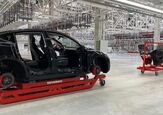
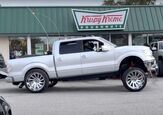


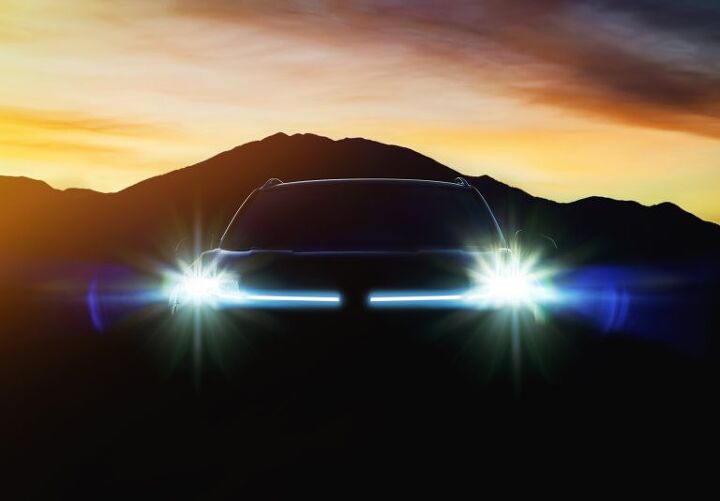
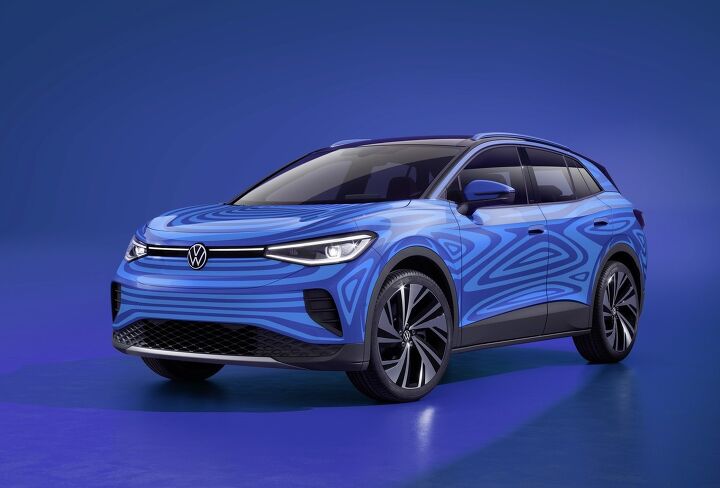

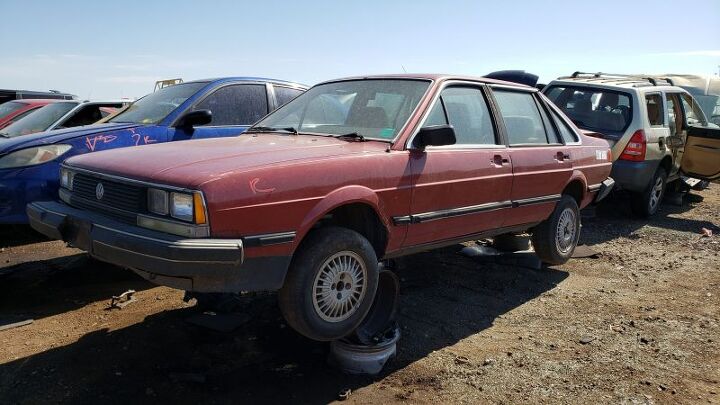
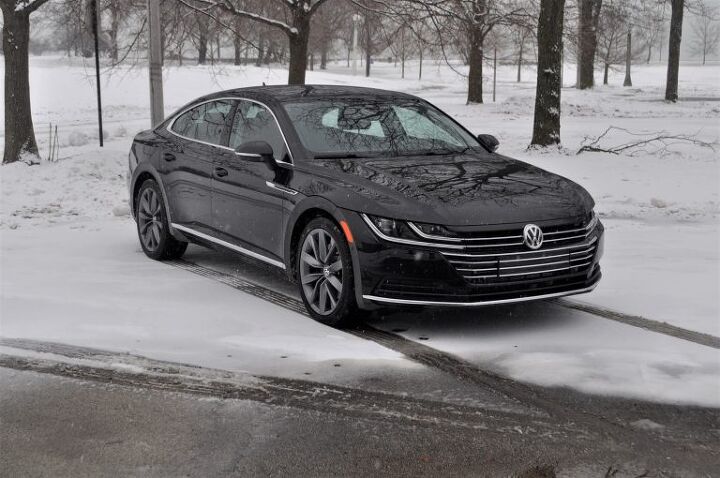
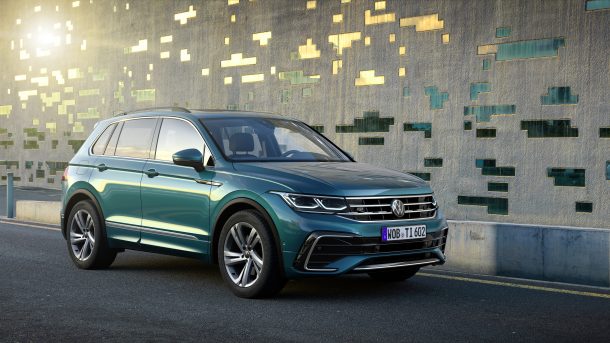



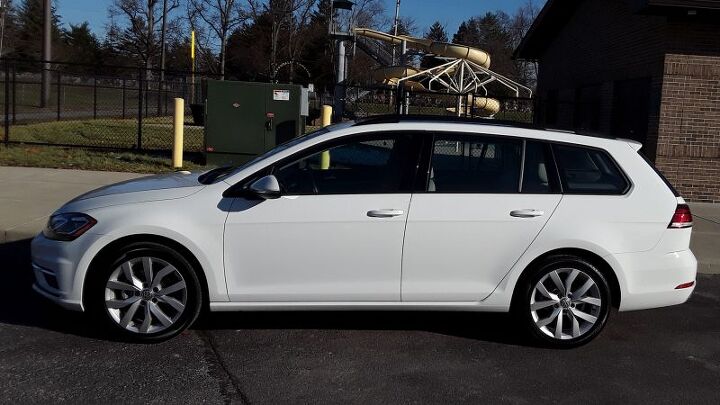

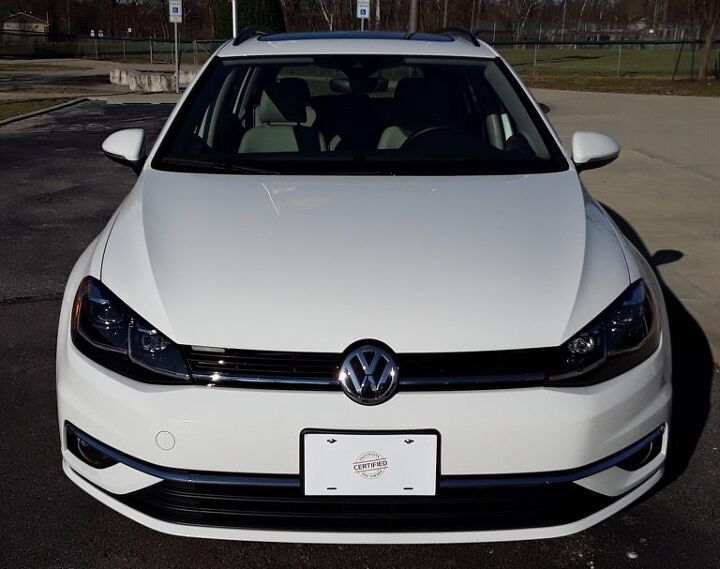

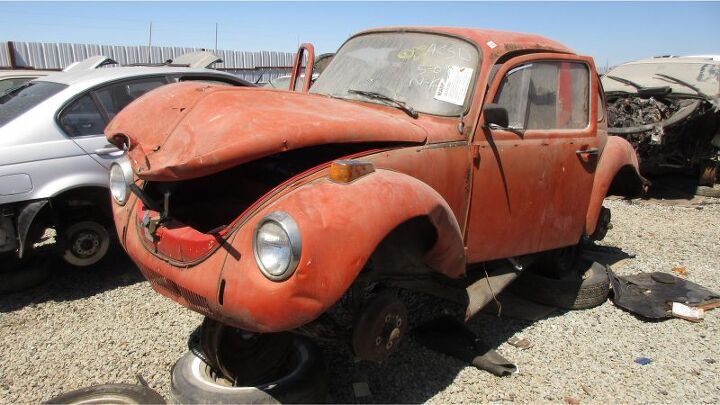

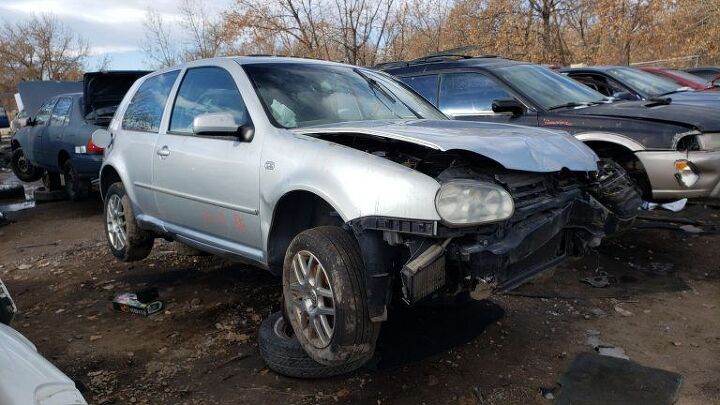



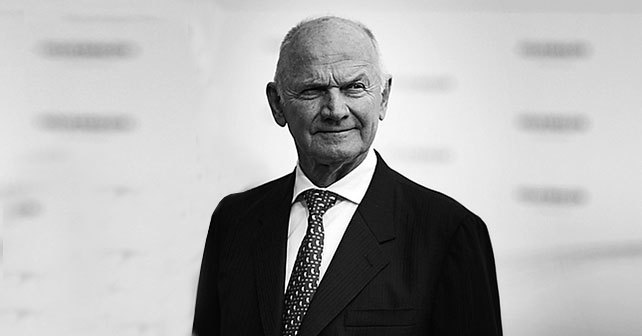
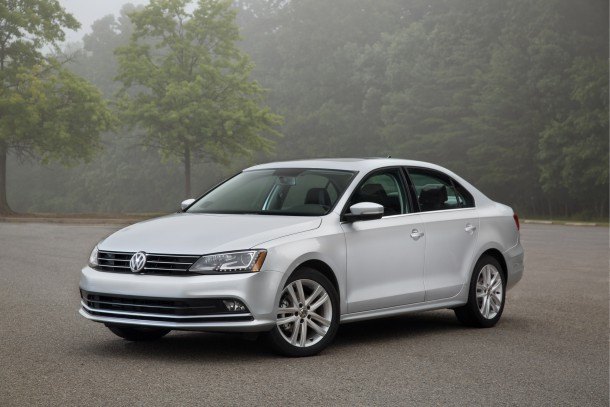
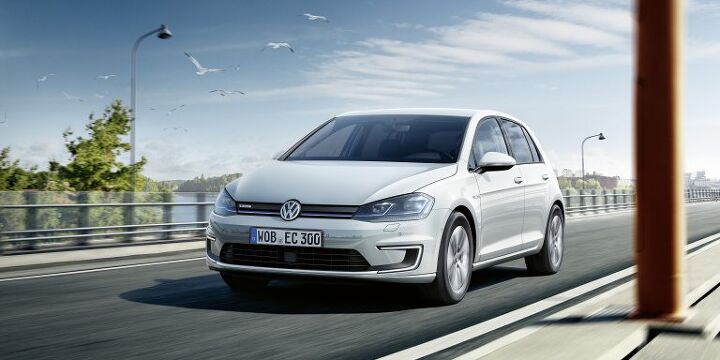

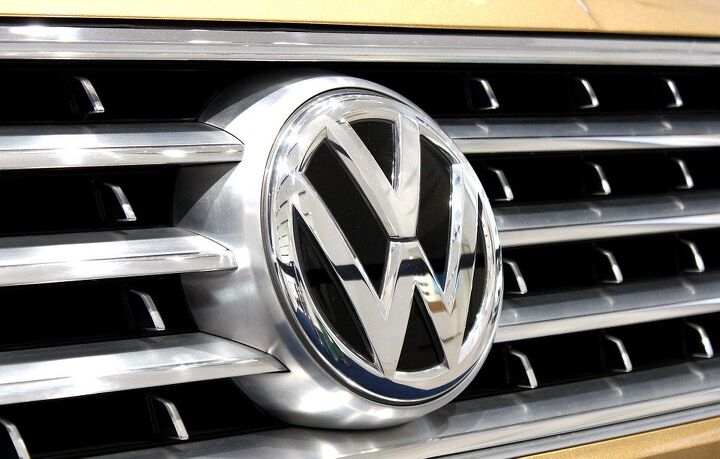

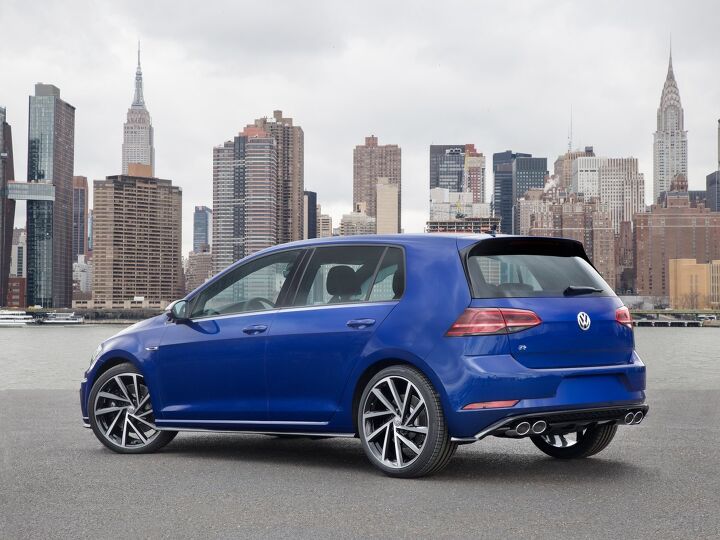
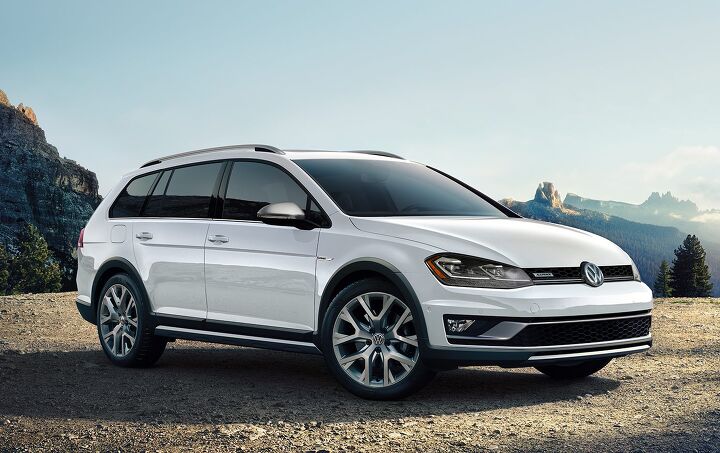
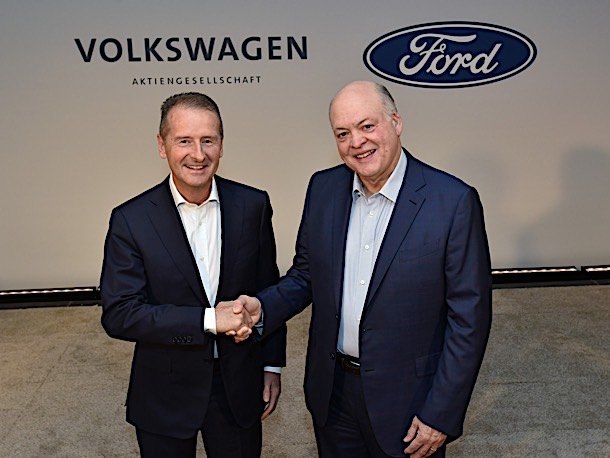




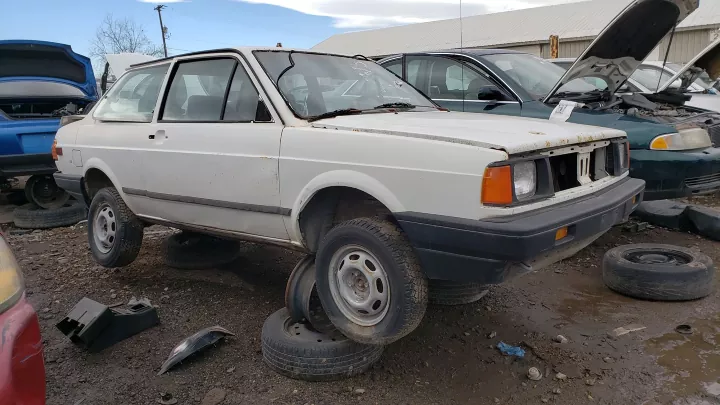
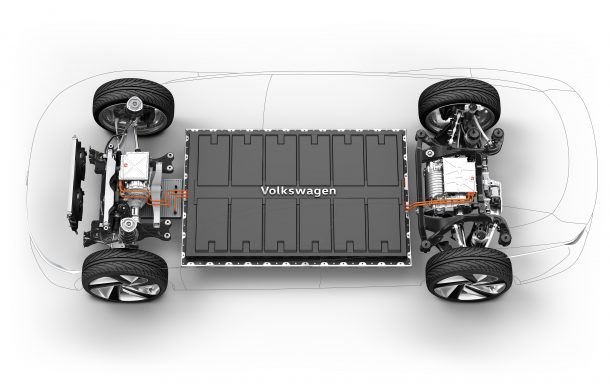

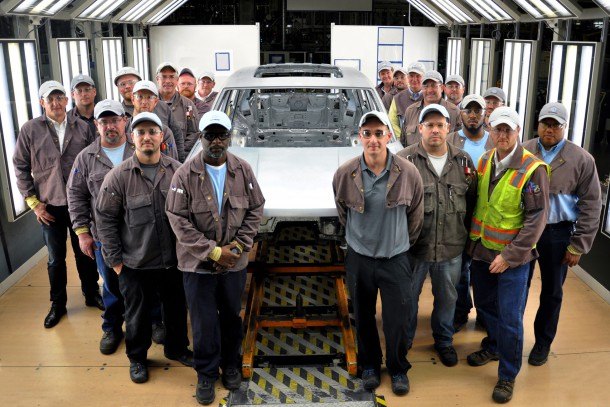

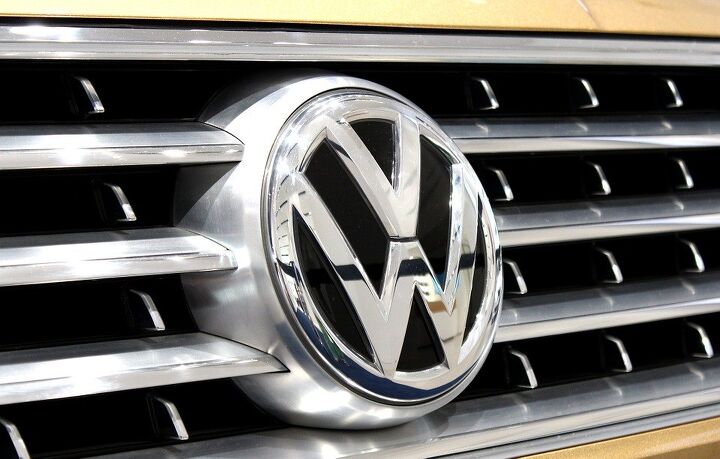
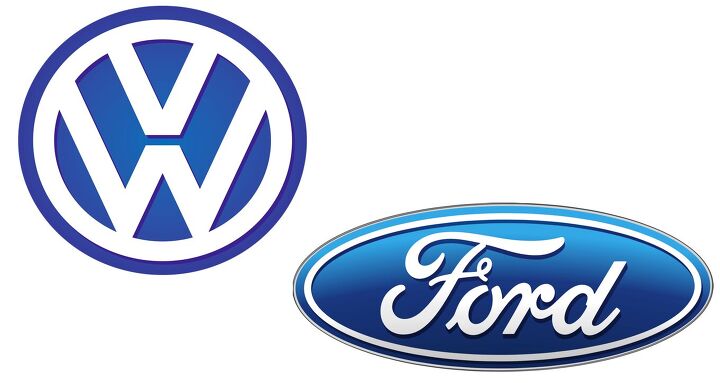
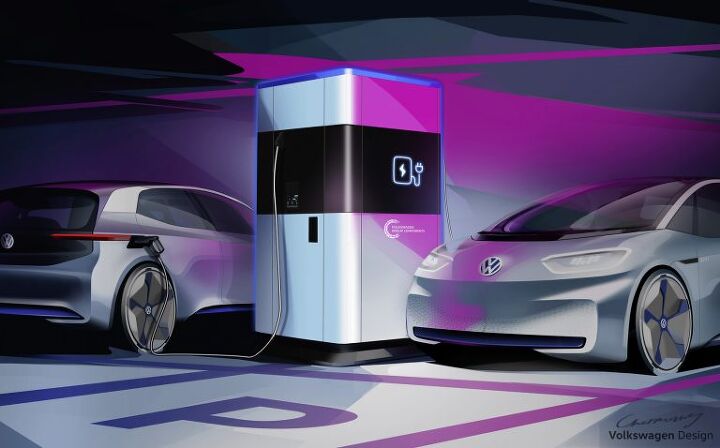


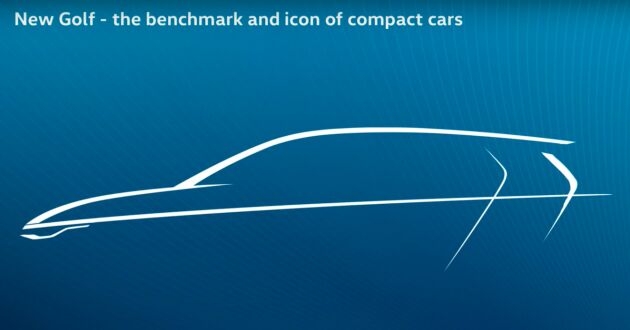




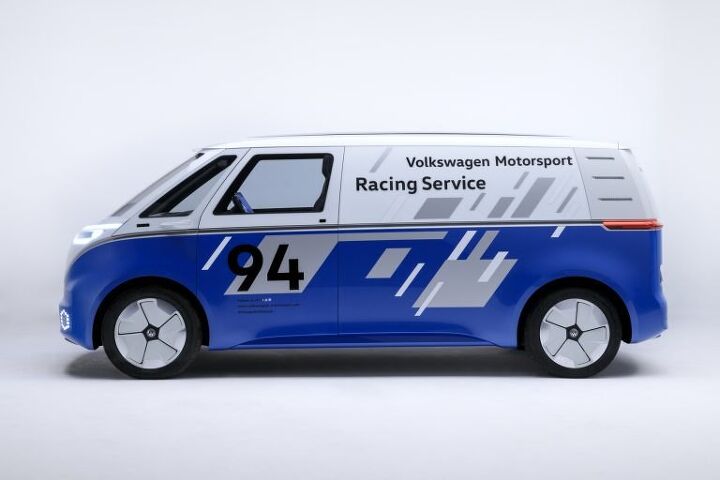

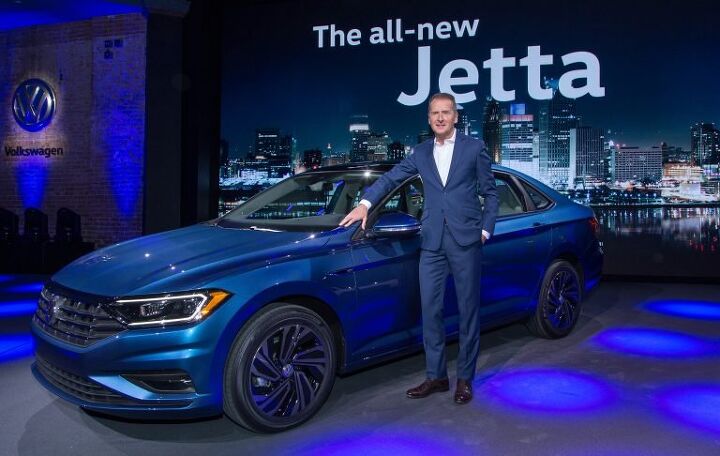



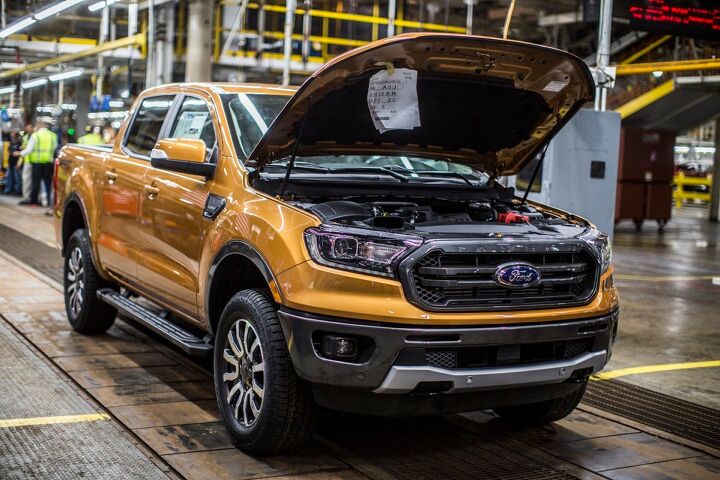
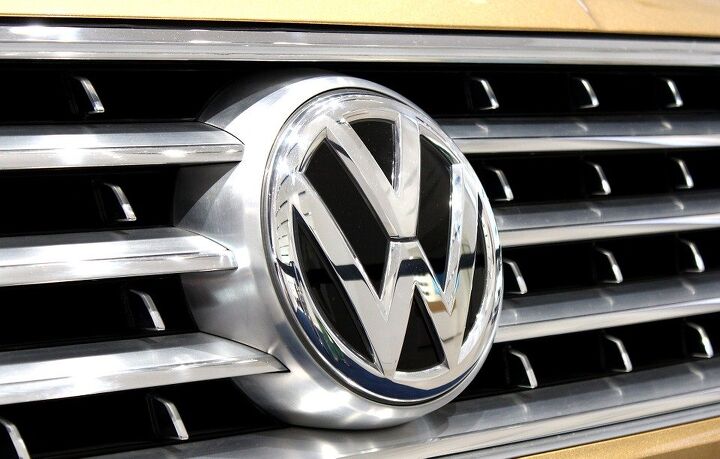
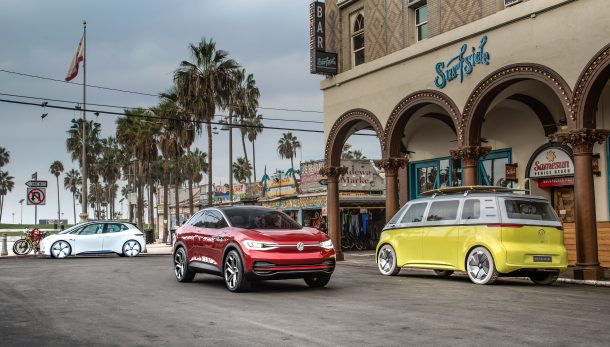













Recent Comments